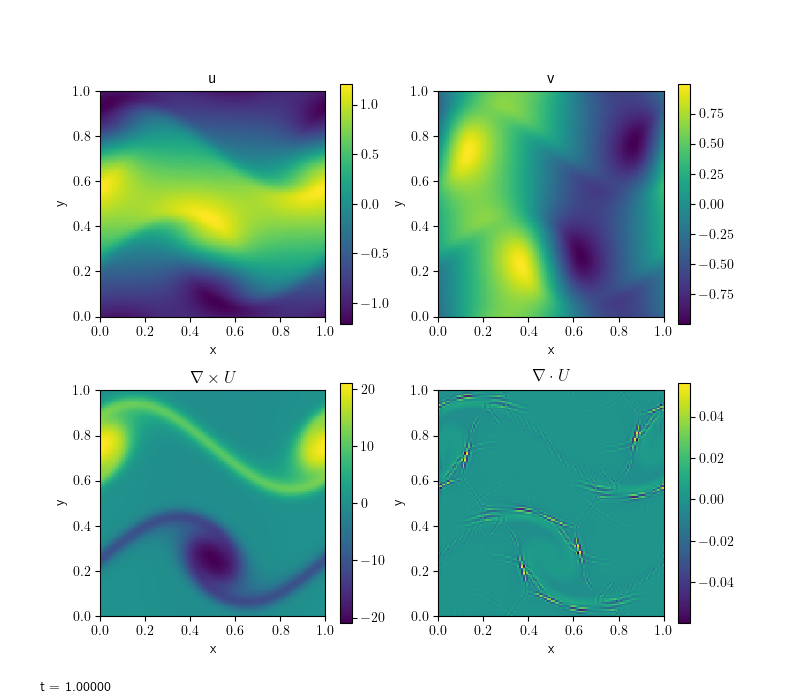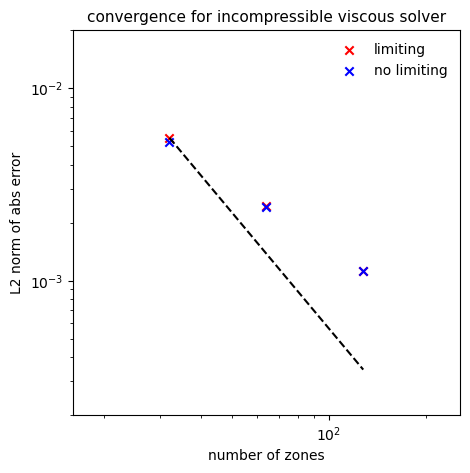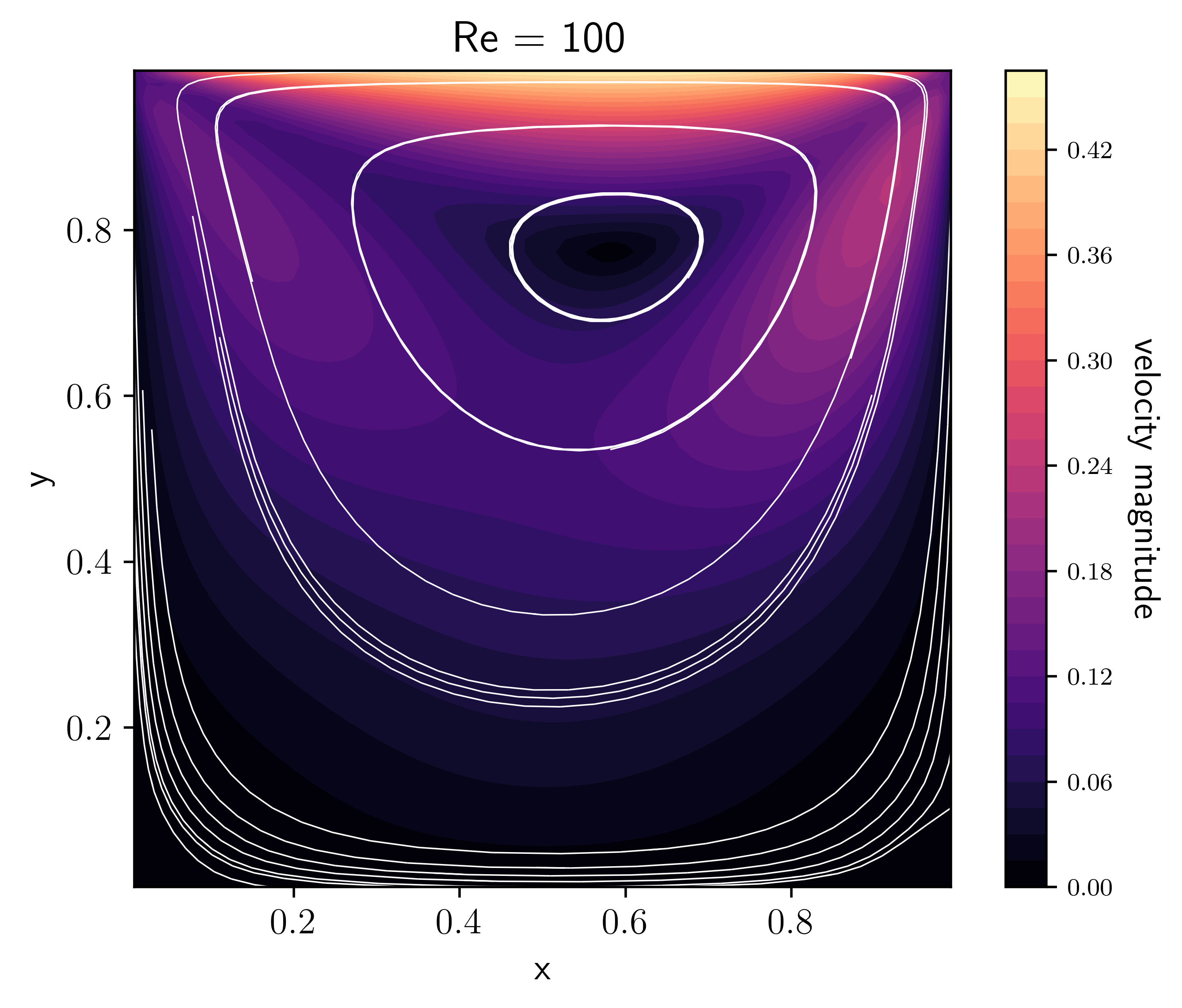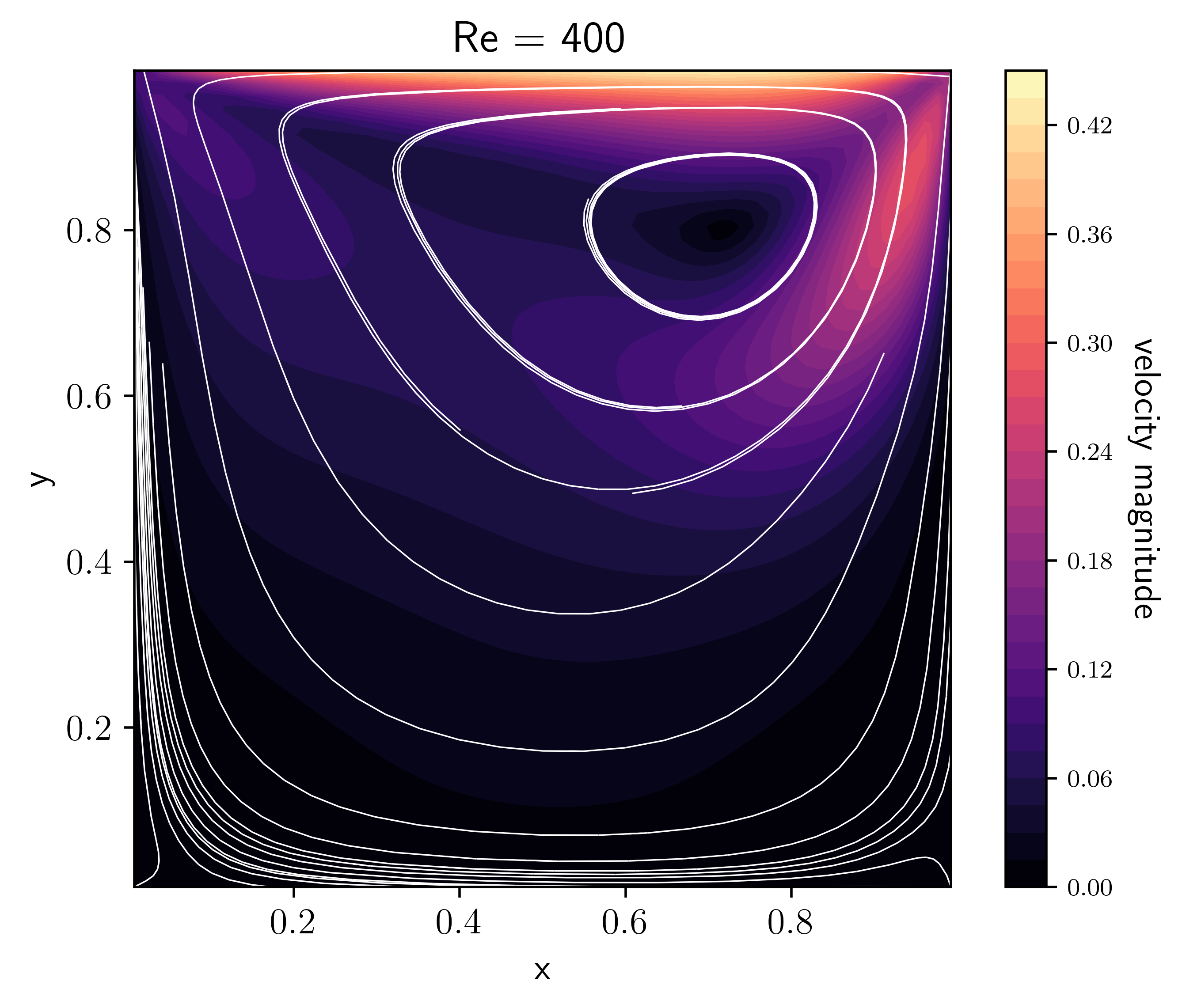Incompressible viscous hydrodynamics solver#
pyro’s incompressible viscous solver solves:
This solver is based on pyro’s incompressible solver, but modifies the velocity update step to take viscosity into account.
The main parameters that affect this solver are:
section:
[driver]option
value
description
cfl0.8section:
[incompressible]option
value
description
limiter2limiter (0 = none, 1 = 2nd order, 2 = 4th order)
proj_type2what are we projecting? 1 includes -Gp term in U*
section:
[incompressible_viscous]option
value
description
viscosity0.1kinematic viscosity of the fluid (units L^2/T)
section:
[particles]option
value
description
do_particles0particle_generatorgrid
Examples#
shear#
The same shear problem as in incompressible solver, here with viscosity added.
pyro_sim.py incompressible_viscous shear inputs.shear

Compare this with the inviscid result. Notice how the velocities have diffused in all directions.
cavity#
The lid-driven cavity is a well-known benchmark problem for hydro codes (see e.g. Ghia et al. [GhiaGhiaShin82], Kuhlmann and Romanò [KRomano19]). In a unit square box with initially static fluid, motion is initiated by a “lid” at the top boundary, moving to the right with unit velocity. The basic command is:
pyro_sim.py incompressible_viscous cavity inputs.cavity
It is interesting to observe what happens when varying the viscosity, or, equivalently the Reynolds number (in this case \(\rm{Re}=1/\nu\) since the characteristic length and velocity scales are 1 by default).
These plots were made by allowing the code to run for longer and approach a
steady-state with the option driver.max_steps=1000, then running
(e.g. for the Re=100 case):
python incompressible_viscous/problems/plot_cavity.py cavity_n64_Re100_0406.h5 -Re 100 -o cavity_Re100.png
convergence#
This is the same test as in the incompressible solver. With viscosity,
an exponential term is added to the solution. Limiting can again be
disabled by adding incompressible.limiter=0 to the run command.
The basic set of tests shown below are run as:
pyro_sim.py incompressible_viscous converge inputs.converge.32 vis.dovis=0
pyro_sim.py incompressible_viscous converge inputs.converge.64 vis.dovis=0
pyro_sim.py incompressible_viscous converge inputs.converge.128 vis.dovis=0
The error is measured by comparing with the analytic solution using
the routine incomp_viscous_converge_error.py in analysis/. To
generate the plot below, run
python incompressible_viscous/tests/convergence_errors.py convergence_errors.txt
or convergence_errors_no_limiter.txt after running with that option. Then:
python incompressible_viscous/tests/convergence_plot.py

The solver is converging but below second-order, unlike the inviscid case. Limiting does not seem to make a difference here.
Exercises#
Explorations#
In the lid-driven cavity problem, when does the solution reach a steady-state?
[GhiaGhiaShin82] give benchmark velocities at different Reynolds number for the lid-driven cavity problem (see their Table I). Do we agree with their results?



